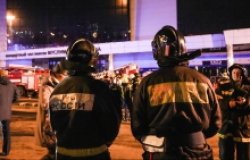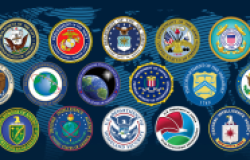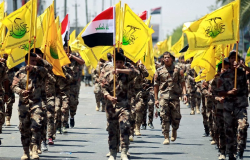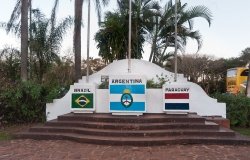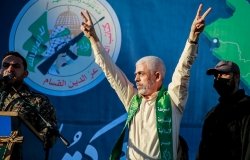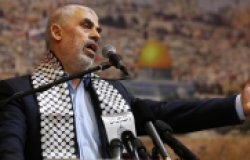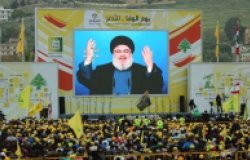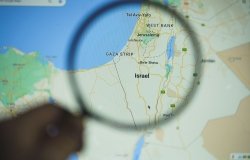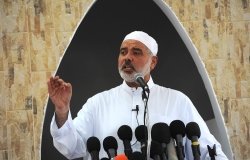Terror in Lahore: Pakistan’s Toughest Test
As terrorist attacks hit Pakistan’s richer cities, Pakistan’s leadership faces a difficult decision.

On March 27, Easter Sunday, militants attacked Lahore’s Gulshan-e-Iqbal park, killing at least 72 people — many of them women and children — and wounding several hundred more.
It was the deadliest attack in Pakistan since the December 2014 school massacre in Peshawar. Unlike the Peshawar attack that targeted an educational center, Easter Sunday’s senseless killing targeted Christians, a long-persecuted minority population in the Muslim-majority country — even as media reports state that most of the victims were Muslims. It left Pakistanis once again struggling to make sense of the senseless terrorist violence that continues to stalk the country, despite aggressive counterterrorism operations in the North Waziristan tribal region over the past several years.
What makes Sunday’s tragedy particularly significant is its location. Lahore is the capital of Punjab province and the political stronghold of Pakistan’s ruling PML-N party. In recent years, Punjab has suffered fewer mass casualty terror attacks than Khyber-Pakhtunkhwa and Balochistan provinces. However, a number of assaults in recent years have made clear that Punjab is not immune, from a triple bombing on a Sufi shrine that killed more than 40 people in Lahore in 2010, to the assassination of Shuja Khanzada, a top PML-N politician, near the district of Attock in 2015. The park blast simply amplifies what has long been known: terrorists very much have Punjab, and Lahore in particular, in their crosshairs.
The identity of the outfit behind Sunday’s attack, Jamaat-ul-Ahrar (JuA), underscores the very real terror threat faced by Pakistan’s most affluent and populous province. JuA was the Mohmand tribal agency-based branch of the Pakistani Taliban (TTP) until it split from its parent group in 2014. Its star has risen just as the parent TTP’s star has fallen — a consequence of U.S. drone strikes and Pakistani military operations that have degraded the TTP and reduced it to a shadow of its former fearsome self. According to Reuters, JuA has claimed seven major attacks since early 2015. Notably, several of these attacks — including the bombing of a Shiite mosque in Rawalpindi, home to Pakistan’s military headquarters, and twin church bombings in Lahore — were in Punjab. This is no surprise, given that, according to terrorism researchers, JuA has had a presence in Punjab for nearly two years. Pakistan’s leadership must now confront a conundrum that it has long sought to sweep under the carpet: What to do about terrorist networks and facilities in a province that, for political reasons, it has much preferred not to touch in order to avert bloodshed. Punjab is home not just to Taliban factions like JuA, but also to notorious anti-India groups such as Lashkar-e-Taiba and Jaish-e-Mohammad, and sectarian outfits like Lashkar-e-Jhangvi.
Pakistan’s leadership must now confront a conundrum that it has long sought to sweep under the carpet: What to do about terrorist networks and facilities in a province that, for political reasons, it has much preferred not to touch in order to avert bloodshed.
In the hours after the Easter massacre, Pakistani authorities suggested that security forces would launch a major operation in Punjab. No specific groups or locations were named, however. Also missing was clarity about the division of labor between the Pakistani government and the military.
Any major campaign in Punjab would likely be similar to those in the tribal areas. It would target groups that stage attacks in Pakistan, such as JuA, and avoid focusing on the anti-India groups. Pakistan has little incentive to sever ties with useful proxies that can be used against its archenemy.
Adopting such a selective policy toward militancy in Punjab would be as dangerous as it has been in the tribal areas, and perhaps even more so. All terror groups in Pakistan are, by definition, violent organizations — and therefore a threat to the country’s tenuous stability. Key members of the groups that Pakistan patronizes and leaves alone — particularly the India-focused ones — often turn on their master and join the anti-state groups. One of the most prominent examples is Ilyas Kashmiri, the one-time anti-India fighter who became a top al Qaeda commander after the 9/11 attacks. More recently, JeM leader Asmatullah Muawiya became a Punjab-based TTP commander in 2007, while Mast Gul moved from a Kashmir militant group to the TTP in 2014.
At the same time, it’s folly to assume that if Pakistan simply declared war on all Punjab-based groups, its problems would magically disappear. Blowback would be guaranteed, and the implications for stability would be considerable — and, given that this is Punjab, politically explosive.
If it does nothing in Punjab, JuA (and likeminded anti-state groups) could broaden its network and deepen its presence and capacities — particularly in a region rife with militant facilities and, one can assume, ready-made radicalized recruits. And yet, if Pakistan takes action in Punjab, it faces the prospect of major backlash.
At the same time, Pakistan faces pressure from other quarters. The Lahore park blast occurred against the backdrop of rising anti-government sentiment from religious extremists. According to the BBC, 25,000 of them descended on Islamabad on Sunday to protest, at times violently, Pakistan’s recent execution of Mumtaz Qadri, a former police officer who assassinated Punjab governor Salman Taseer for his outspoken opposition to the country’s blasphemy laws.
One can assume that if Pakistan were to broaden its campaign against militancy in Punjab, these types of people would be up in arms. Despite these risks, intensifying such a campaign is critical. The TTP may be degraded and decimated, but its offshoots — like JuA — are ferocious and formidable forces, including in the prized province of Punjab.
Pakistan may have reached an inflection point. How it responds to the events of recent days could go a long way toward determining the country’s trajectory.
This article originally appeared on Foreign Policy.
About the Author


Indo-Pacific Program
The Indo-Pacific Program promotes policy debate and intellectual discussions on US interests in the Asia-Pacific as well as political, economic, security, and social issues relating to the world’s most populous and economically dynamic region. Read more
